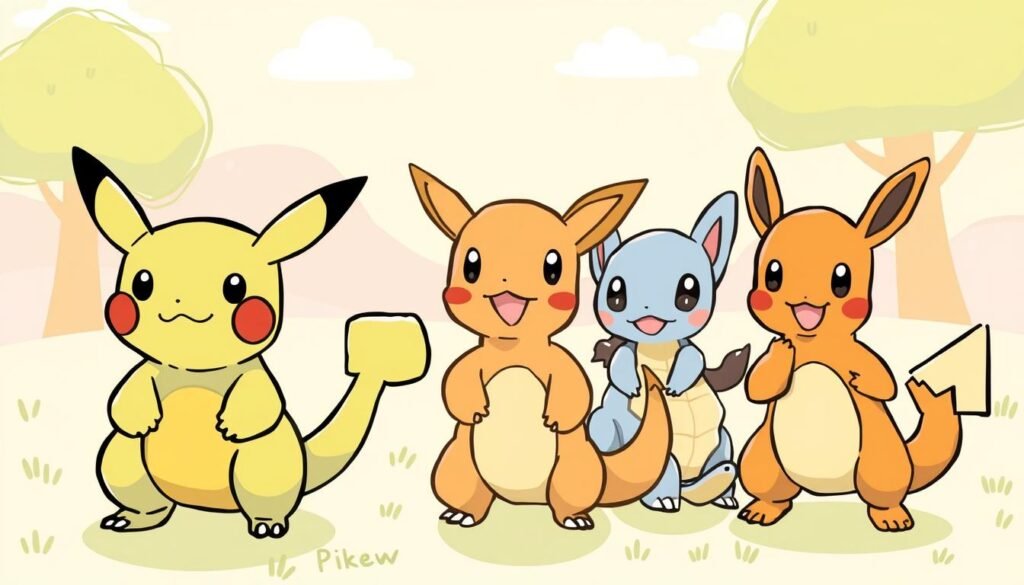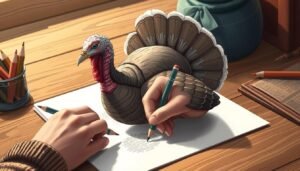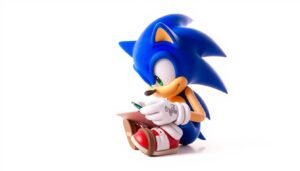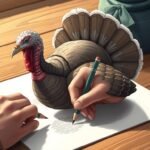With over 800 Pokémon out there, it’s hard for beginners to know where to start. But, some Pokémon are easier to draw because of their simple shapes and few details.
Pikachu, Jigglypuff, and Ditto are great for beginners. They have basic shapes that make them easy to draw. For more ideas, check out a list of 20 easy Pokémon to draw. It includes a variety of characters from different generations.
Drawing Pokémon is a fun and creative hobby. In this article, I’ll show you how to start with easy tutorials. This will help you begin your Pokémon drawing journey.
Key Takeaways
- Start with simple Pokémon like Pikachu and Jigglypuff.
- Use basic shapes to help you draw Pokémon accurately.
- Explore different generations of Pokémon for inspiration.
- Practice drawing Pokémon regularly to improve your skills.
- Refer to lists of easy Pokémon to draw for guidance.
Introduction to Drawing Pokémon
Pokémon is a big deal in our culture, offering a chance to be creative. It’s not just about drawing characters. It’s about bringing your favorite Pokémon to life with your own touch.
Why Drawing Pokémon is Fun
Drawing Pokémon is a blast. It lets fans connect with their favorite characters in a new way. You get to dive deep into the Pokémon world, focusing on details like textures and colors.
One of the best parts is trying out different styles. Whether you’re new to art or have been doing it for years, Pokémon characters are perfect for any style. You can make them your own.
Benefits of Drawing Pokémon
- Enhances creativity and imagination
- Develops fine motor skills and hand-eye coordination
- Provides a fun way to relax and express yourself
Benefits of Artistic Expression
Art, like drawing Pokémon, has many benefits. It boosts creativity, improves hand skills, and is a great way to express yourself. For Pokémon fans, it can make their connection to the characters even stronger.
“Art is the only way to run away without leaving home.” – Twyla Tharp
This quote really gets why drawing Pokémon is so appealing. It lets you dive into a world of imagination while staying in your own creative space.
| Skill Developed | Benefit |
|---|---|
| Creativity | Enhances imagination and problem-solving skills |
| Fine Motor Skills | Improves dexterity and hand-eye coordination |
| Self-Expression | Provides an outlet for personal expression and stress relief |
By diving into drawing Pokémon, you get to enjoy a fun hobby. You also develop skills that can help in other areas of your life.You can see about how-to-draw-a-flower.
Getting Started: Essential Drawing Supplies
Before you start drawing Pokémon, you need the right supplies. The right tools can really improve your artwork.
Pencils, Papers, and Erasers
The basics are key: pencils, papers, and erasers. A good pencil is essential for your Pokémon drawings. Start with a graphite pencil (HB or 2B) for basic drawing. Use a softer pencil (4B or 6B) for shading.
Choose a smooth, durable paper for your drawings. A paper with a weight of 80-100 gsm is best. It can handle many erasures and sketches without tearing. A kneaded eraser is great for erasing small or large areas.
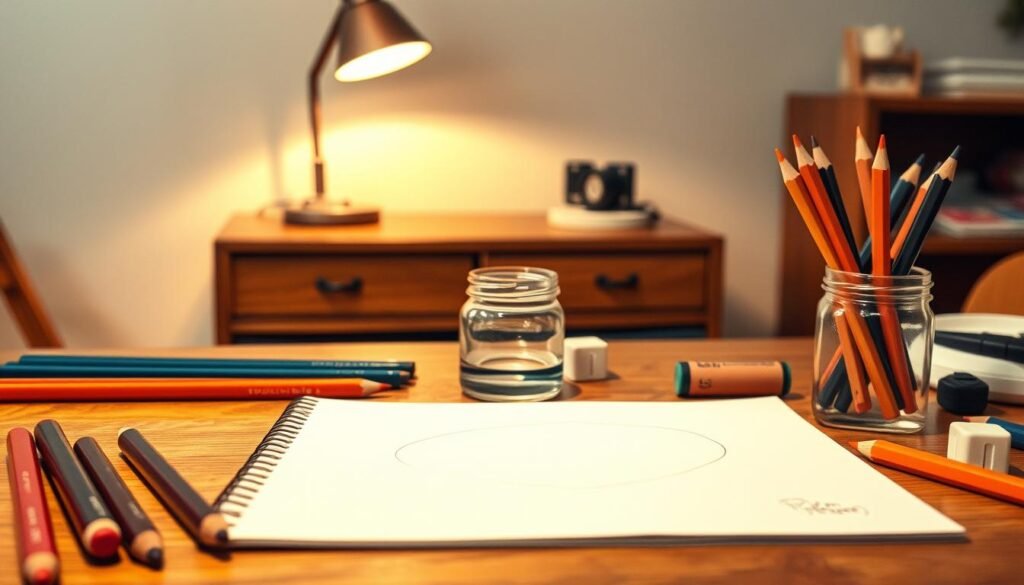
Markers, Colors, and Other Tools
Once you’re good at sketching, add colors with markers or colored pencils. Markers are perfect for bold colors. Colored pencils are better for subtle shading and blending.You can see about how-to-draw-a-cat.
Other tools like a ruler for straight lines, a sharpener for sharp pencils, and a blending stump for smooth shading are useful. Try different tools to find what suits your drawing style best.
| Supply | Description | Use in Pokémon Drawing |
|---|---|---|
| Pencils (HB, 2B, 4B, 6B) | Graphite pencils for drawing and shading | Sketching and shading Pokémon characters |
| Eraser (Kneaded) | Eraser that can be molded into different shapes | Erasing small areas or large sections |
| Markers/Colored Pencils | Tools for adding color to drawings | Coloring Pokémon characters |
| Ruler | Tool for drawing straight lines | Creating backgrounds or geometric shapes |
With these essential supplies, you’re ready to create amazing Pokémon art. Remember, practice is key. Don’t be afraid to try new tools and techniques.
Basic Shapes: The Foundation of Drawing
Learning to draw Pokémon starts with breaking them down into simple shapes. It’s easy to get lost in details, but simplifying helps you draw more accurately and proportionally.
Breaking Down Characters into Simple Shapes
To draw Pokémon well, break them down into basic shapes like circles, ovals, rectangles, and triangles. For example, Pikachu’s body is made of ovals and circles. Its ears are triangles.
Using basic shapes makes drawing easier and helps with proportions. Starting with simple forms ensures all parts of the Pokémon fit together well.
Importance of Proportions in Drawing
Proportions are key in drawing Pokémon. Making sure each part is the right size is crucial for a believable and pleasing drawing.
| Pokémon Character | Basic Shapes | Proportion Tips |
|---|---|---|
| Pikachu | Ovals and Circles for body, Triangles for ears | Ensure the ears are in proportion to the head |
| Charizard | Large rectangles for body, Triangles for wings | Make sure the wings are large enough in comparison to the body |
| Bulbasaur | Ovals for body, Smaller ovals for the plant on its back | Ensure the plant on its back is in proportion to its body |
By focusing on basic shapes and keeping proportions right, you’ll improve your Pokémon drawings. This method makes drawing easier and boosts your artwork’s quality.
Drawing Pikachu: Step-by-Step Guide
Learning to draw Pikachu is easy when you break it down. Start with simple shapes and lines. Follow this guide to draw Pikachu yourself.
Sketching Pikachu’s Body
Begin with a circle for Pikachu’s head and an oval for its body. Make sure the proportions are right. The head should be one-third of the body’s height. Draw a neck to connect the head and body, and add a curved line for the back.
![]()
For more detailed guidance, check out this step-by-step tutorial. It offers extra tips and tricks.
Adding Features: Ears and Face
After the body, add Pikachu’s unique features. Start with the ears, which are triangular and iconic. Make sure they’re the right size for the head. Then, draw the face, focusing on the eyes, nose, and mouth. Don’t forget Pikachu’s cheeks.
Remember, practice is key. Your first tries might not be perfect. But with time and patience, you’ll get better. You’ll be able to draw Pikachu just like you want.
“The key to drawing is not about creating a perfect replica but capturing the spirit and essence of the subject.”
Learning to Draw Charizard
Learning to draw Charizard means mastering its unique features like wings and flames. It’s a well-known Pokémon known for its strong look and lively pose.
![]()
Drafting the Basic Outline
To draw Charizard, start with a basic outline. Start with simple shapes like circles and rectangles to get the proportions right. Charizard’s body is big and muscular, so make sure your first sketch shows this.
Begin with a large oval for the body and a smaller circle for the head. Connect these with a neck, and then add guidelines for the wings and tail. This helps you get a balanced look.You can see about how-to-draw-a-rose.
Details: Wings, Tail, and Flames
After the basic outline, add details. Charizard’s wings are a key feature, and they should be drawn with a mix of curved and angular lines. This captures their dynamic shape.
The tail is also unique, and it should be long and flame-like. Add flames at the tail’s end for a fiery look. Don’t forget the flames in Charizard’s mouth for a fierce expression.
- Sketch the wings with a broad base and tapering tips.
- Add veins to the wings for a more detailed look.
- Draw the tail with a flowing, flame-like shape.
By following these steps, you can make a compelling Charizard drawing. It will show off its powerful and majestic features.
Capturing the Essence of Bulbasaur
Bulbasaur is a unique Pokémon with a mix of Pokémon and plant traits. It’s a great subject for artists wanting to improve their drawing skills. Its mix of reptile and plant features makes it a fun character to draw.
To draw Bulbasaur, start with the basics. Understanding the structure of the head and body is key. Sketch the basic shapes of Bulbasaur’s body, focusing on proportions.
Starting with the Head and Body
Draw a simple oval for the head and a larger oval for the body. Make sure the proportions are correct. This will be the base of your drawing. Bulbasaur’s body is bulky, so reflect this in your sketches.
As you refine your drawing, add the outlines of the legs and tail. Bulbasaur stands in a unique way, suggesting movement. Learning to draw cute Pokémon means capturing these details.
Adding the Plant Features
The plant bulb on Bulbasaur’s back is a key feature. Start by adding a rounded shape connected to the back, making sure it’s proportional. The plant bulb is a key feature that defines Bulbasaur, so take your time.
Continue by adding details like leaves and the texture of the bulb. Paying attention to these details will make your drawing come alive. Remember, the plant features are essential to Bulbasaur’s identity.
For inspiration and to improve your drawing skills, explore resources on how to draw cute Pokémon. This can offer valuable insights into capturing Bulbasaur’s charm and character.
By following these steps and practicing regularly, you’ll master drawing Bulbasaur. Remember, the key to getting better is consistent practice and a willingness to learn and adapt.
Techniques for Creating Dynamic Poses
Dynamic poses add energy and life to Pokémon drawings. They make the artwork more engaging. It’s important to capture the Pokémon’s personality and movement.
Understanding Movement and Action Lines
To draw dynamic poses, understanding movement and action lines is key. Action lines are imaginary lines that show the Pokémon’s movement. They help artists show energy and motion.
For example, drawing Pikachu in mid-jump, the action line shows its leap. Trying different action lines can help find the best pose for your Pokémon.
| Pokémon | Action Line | Dynamic Pose |
|---|---|---|
| Pikachu | Jumping trajectory | Mid-air leap |
| Charizard | Flight path | Soaring through the air |
Experimenting with Angles and Perspective
Trying different angles and perspectives can make your Pokémon drawings more interesting. Changing your viewpoint can lead to more dynamic compositions.
“The way you see the world is unique, and that’s what makes your art special. Don’t be afraid to experiment and try new things!”
Drawing a Pokémon from a worm’s-eye view can make it seem powerful. A bird’s-eye view can show vulnerability or intimacy. Playing with angles and perspectives is key to creating dynamic and engaging Pokémon art.

Mastering dynamic poses can bring your Pokémon drawings to life. It captures their unique personalities and characteristics. Whether you’re new or experienced, practicing these techniques will improve your skills and create captivating artwork.
Coloring Your Pokémon Drawings
Once you’ve sketched your favorite Pokémon, it’s time to add color. This step can really make your drawings pop. I’ll show you how to pick the right colors and blend them to bring your Pokémon to life.
Choosing the Right Color Palettes
Picking the right colors is key. Look at official Pokémon artwork or the games and anime for ideas. For example, Pikachu is known for its bright yellow and red.
Here are some tips for a great color palette:
- Stick to a few colors for consistency.
- Choose colors that go well together.
- Check official Pokémon artwork for accuracy.
| Pokémon | Primary Color | Secondary Color |
|---|---|---|
| Pikachu | Yellow | Red |
| Charizard | Orange | Yellow |
| Bulbasaur | Green | Blue |
Techniques for Blending and Shading
Blending and shading add depth to your drawings. You can use colored pencils, markers, or digital tools to get the look you want.
Blending Techniques:
- Layer colors for a smooth look.
- Use a blending stump or tortillon with colored pencils.
Shading Tips:
- Find the light source in your drawing.
- Shade to create a 3D effect.
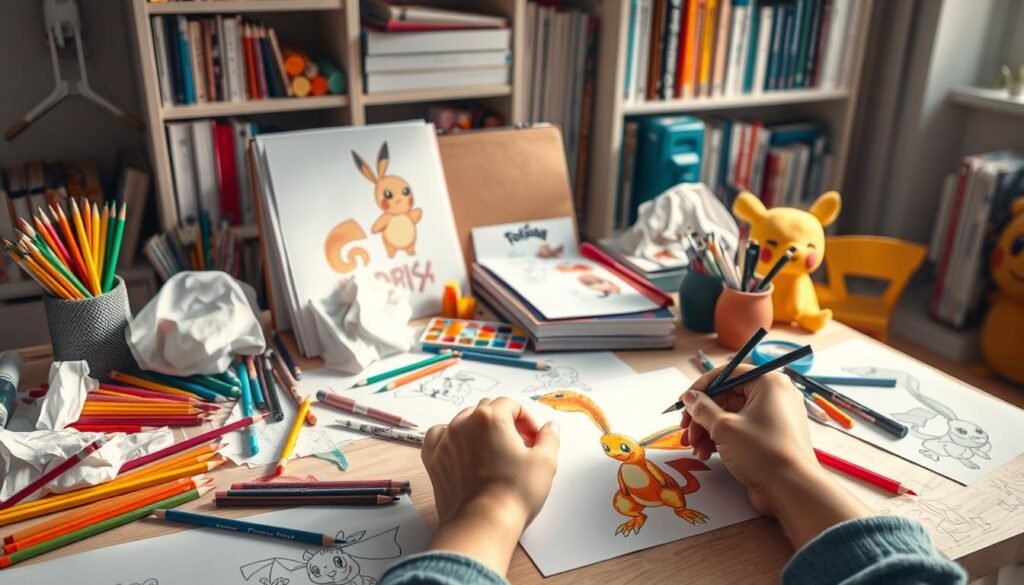
Mastering coloring can really improve your Pokémon drawings. Try out different colors and techniques to see what works best for you.
Practicing Advanced Pokémon Art
Once you’ve learned the basics, you can dive into advanced Pokémon art. This means trying out various styles and techniques. It’s all about creating unique and personal drawings.
Exploring Different Pokémon Styles
Improving your Pokémon art means trying different styles. You can change your line work, shading, and colors. For example, you can draw Pokémon in a minimalist style or a hyper-realistic style.
Playing with line weights and textures can make your drawings more interesting. To start, check out online art communities or tutorials. This Pokémon drawing class can teach you new skills and inspire you.
Incorporating Background Elements
Adding backgrounds to your Pokémon drawings can make them better. Start with simple backgrounds like forests or cities. Then, try more complex scenes.
Think about where your Pokémon is. For Pikachu, maybe it’s in a forest or near a storm. 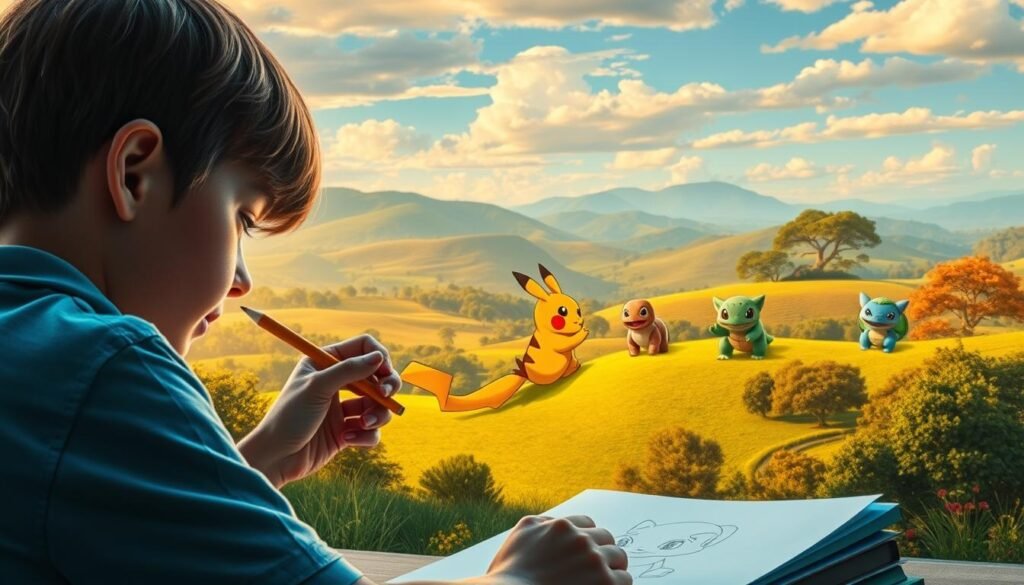 The background should match the Pokémon and enhance the drawing’s story or mood.
The background should match the Pokémon and enhance the drawing’s story or mood.
By adding backgrounds and trying different styles, you can really boost your Pokémon art. You’ll also find your own unique way of drawing.
Sharing and Showcasing Your Artwork
Now that you’ve finished your Pokémon drawings, it’s time to share them. Sharing your art lets you connect with fans and artists who love your work.
Platforms for Sharing Your Drawings
There are many places to share your Pokémon art. Instagram and Facebook are great for connecting with others. You can also use sites like DeviantArt or ArtStation, made just for artists.
Here are some popular places to share your art:
- Social media platforms
- Dedicated art communities
- Personal websites or blogs
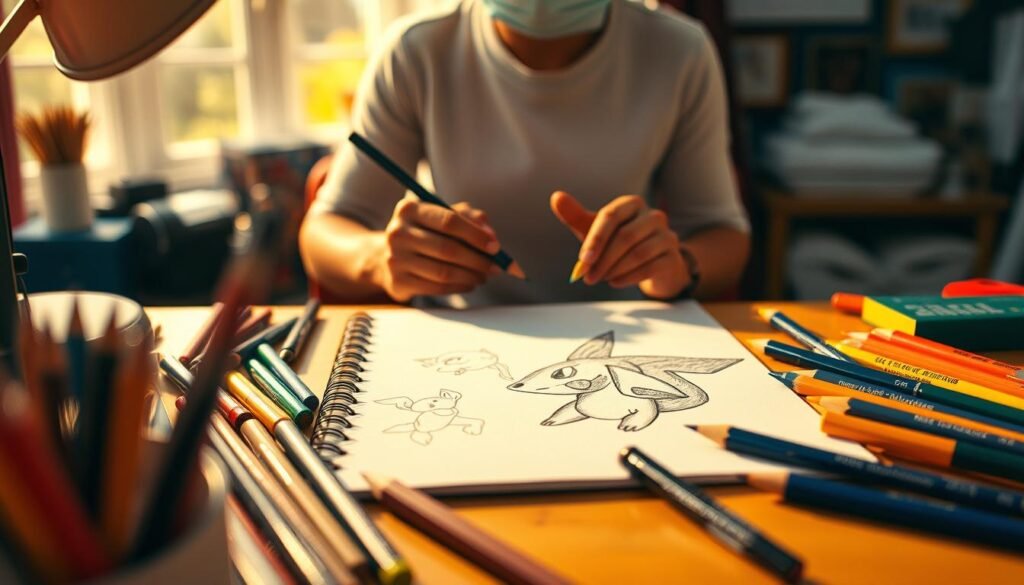
Joining Online Communities and Forums
Online communities and forums for Pokémon and art are great for feedback and support. Reddit has active groups where you can share your art and get feedback.
Being part of these communities offers many benefits:
| Benefit | Description |
|---|---|
| Feedback | Get helpful feedback on your artwork |
| Support | Meet others who love Pokémon and art |
| Learning Opportunities | Discover new techniques and tips from experts |
By sharing your Pokémon artwork and joining online communities, you showcase your talent. You also become part of a creative network. This can help you grow as an artist, stay inspired, and enjoy making art.
Conclusion: Your Pokémon Drawing Journey
As you finish this article, I encourage you to keep practicing Pokémon drawing. You’ve learned the basics and some coloring techniques. These are just the start of your artistic journey.
Practicing Consistently
To get better at drawing Pokémon, make time each week to practice. Try drawing different Pokémon, using various styles and techniques. The more you practice, the more confident you’ll become.
Next Steps for Growth
If you want to improve your Pokémon drawing, look into online tutorials or classes. You can also join online communities to share your work and learn from others. Keep learning and growing to create even more impressive Pokémon drawings.
Learning to draw Pokémon is fun and rewarding. With regular practice and a desire to learn, you can become a skilled artist. You’ll be able to create amazing Pokémon artwork.


